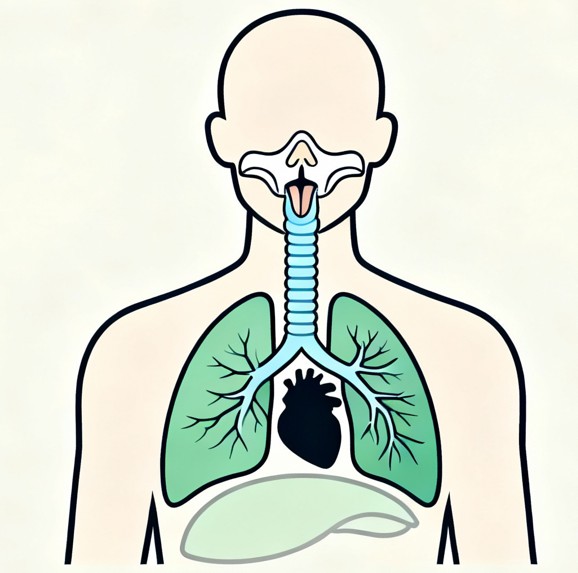
Respiratory Diseases
Introduction Asthma in children is a chronic condition that affects the airways, causing them to become inflamed and narrowed. This makes it difficult for children to breathe and can impact their daily activities, sleep, and overall well-being. Asthma often develops in early childhood and can be...
Introduction A cough is a natural reflex that helps clear the airways of irritants, mucus, and foreign particles. It is a common symptom of many respiratory conditions and can range from a mild, occasional annoyance to a severe, persistent problem. Understanding the different types of coughs and...
Causes Sleep-disordered breathing (SDB) in children encompasses a range of breathing difficulties during sleep, from simple snoring to obstructive sleep apnea (OSA). Common causes include enlarged...
Introduction Pulmonary emphysema is a chronic lung condition that is part of a group of diseases known as chronic obstructive pulmonary disease (COPD). It involves damage to the air sacs (alveoli) in...
Introduction Pulmonary fibrosis is a chronic and progressive lung disease characterized by the scarring and thickening of lung tissue. This scarring, or fibrosis, makes it difficult for the lungs to...
Introduction A pneumothorax, commonly known as a lung collapse, occurs when air leaks into the space between the lung and the chest wall. This air buildup puts pressure on the lung, causing it to...
Introduction Difficulty breathing, or dyspnea, in children can be a frightening experience for both the child and their caregivers. It indicates that the child is not getting enough oxygen, which can...
Introduction Obstructive sleep apnea (OSA) is a common sleep disorder characterized by repeated episodes of upper airway obstruction during sleep. These obstructions lead to pauses in breathing or...
Introduction Chronic obstructive pulmonary disease (COPD) is a long-term, progressive lung disease that makes it difficult to breathe. It is characterized by persistent airflow limitation and includes...
Introduction Living with lung disease can often make breathing difficult, leading to discomfort and reduced quality of life. However, there are various exercises and strategies that can help...
Introduction Coughing is a common symptom in children, serving as a protective reflex to clear the airways of irritants, mucus, and foreign particles. While occasional coughing is normal, persistent...
Introduction Whooping cough, also known as pertussis, is a highly contagious bacterial infection of the respiratory tract. It is characterized by severe coughing fits that can make it difficult to...
Introduction Cystic fibrosis (CF) is a complex, inherited disorder that primarily affects the lungs and digestive system, but it can also impact other organs such as the liver, sinuses, and...
Introduction Recovering from COVID-19 can be a challenging process, as the virus can leave lingering effects that impact physical and mental well-being. Many individuals experience persistent symptoms...
Introduction Legionnaires’ disease is a serious type of pneumonia caused by infection with Legionella bacteria. The illness is named after an outbreak at an American Legion convention in 1976, but...
Introduction Bronchitis is an inflammation of the lining of the bronchial tubes, which carry air to and from the lungs. The condition can be either acute or chronic. Acute bronchitis is usually caused...
Introduction Bronchiolitis is a common respiratory infection that affects the small airways (bronchioles) in the lungs, primarily in infants and young children under two years of age. It is often...
Introduction Pleurisy, also known as pleuritis, is an inflammation of the pleura, which are the two large, thin layers of tissue that separate the lungs from the chest wall. These layers are normally...
Introduction Respiratory syncytial virus (RSV) is a common virus that infects the respiratory tract, especially in infants and young children. While RSV usually causes mild, cold-like symptoms, it can...
Introduction Sarcoidosis is a rare, chronic inflammatory disease that can affect multiple organs in the body, most commonly the lungs and lymph nodes. It is characterized by the formation of small...
Introduction Tuberculosis (TB) is a contagious bacterial infection caused by Mycobacterium tuberculosis. It most commonly affects the lungs but can also involve other parts of the body, such as the...
Introduction Mycoplasma infection is a respiratory illness most commonly caused by the bacterium Mycoplasma pneumoniae. This infection is often referred to as “walking pneumonia” because...
Introduction Altitude sickness, also known as acute mountain sickness (AMS), occurs when a person ascends to high altitudes too quickly, typically above 2,500 meters (8,200 feet). At higher...
